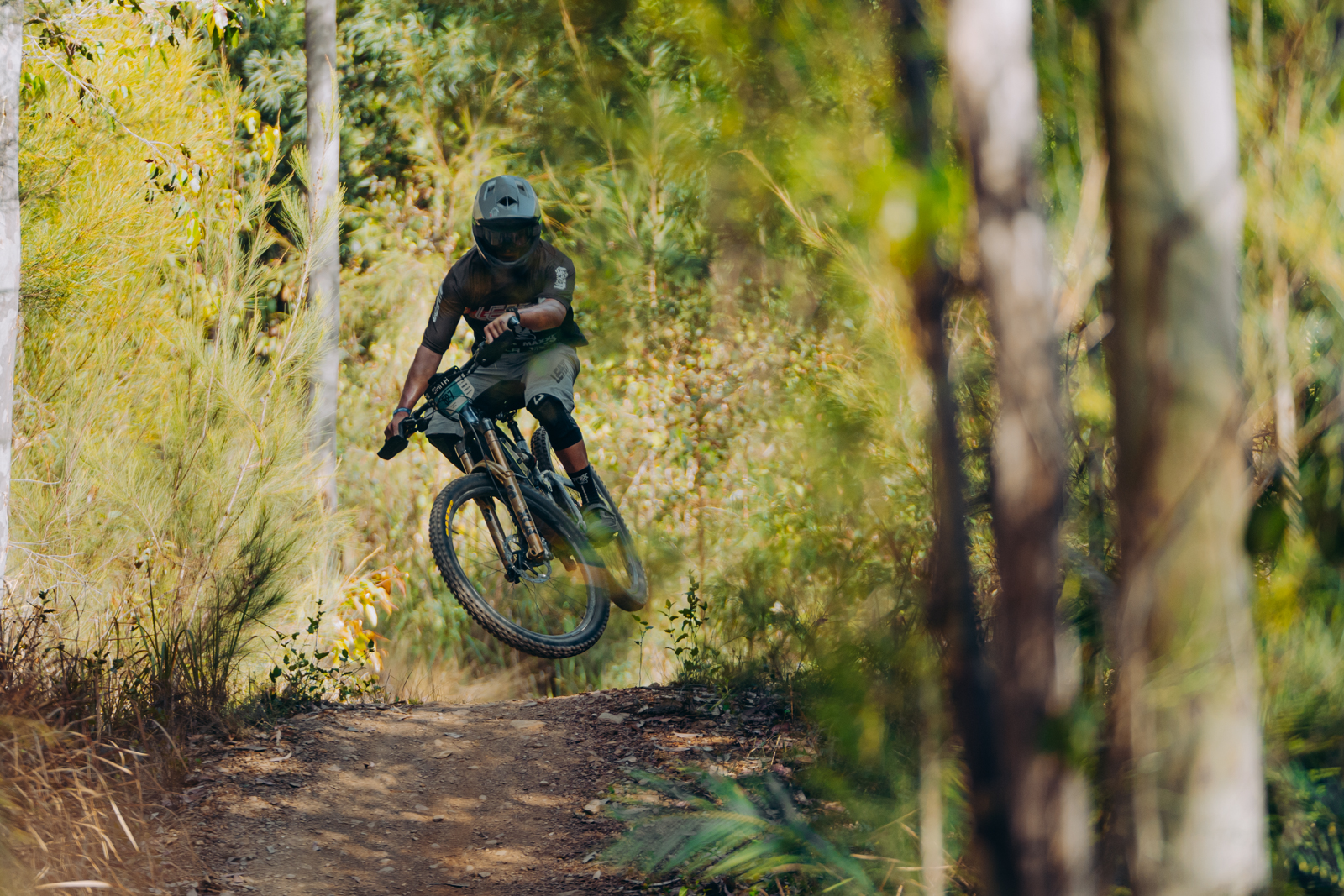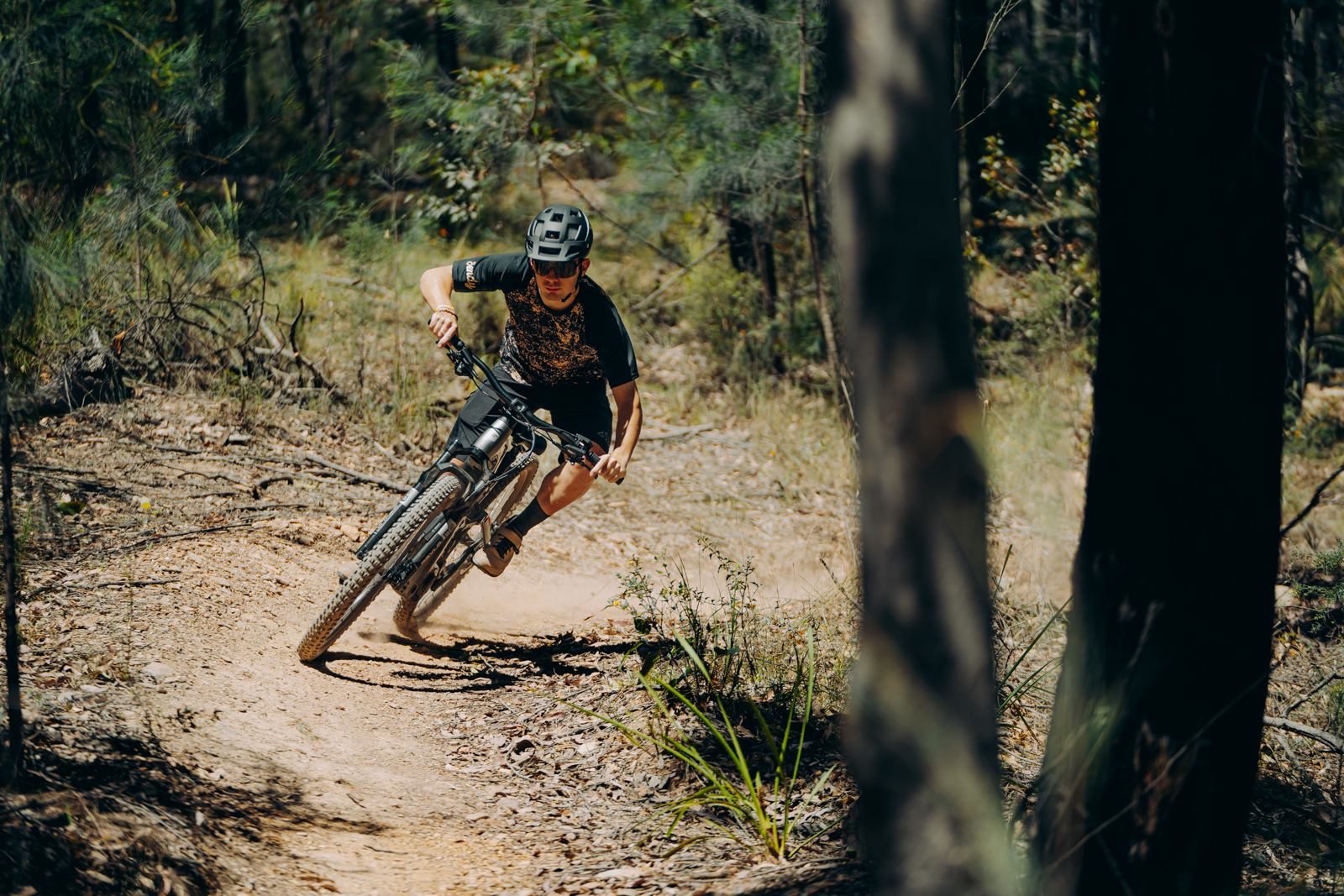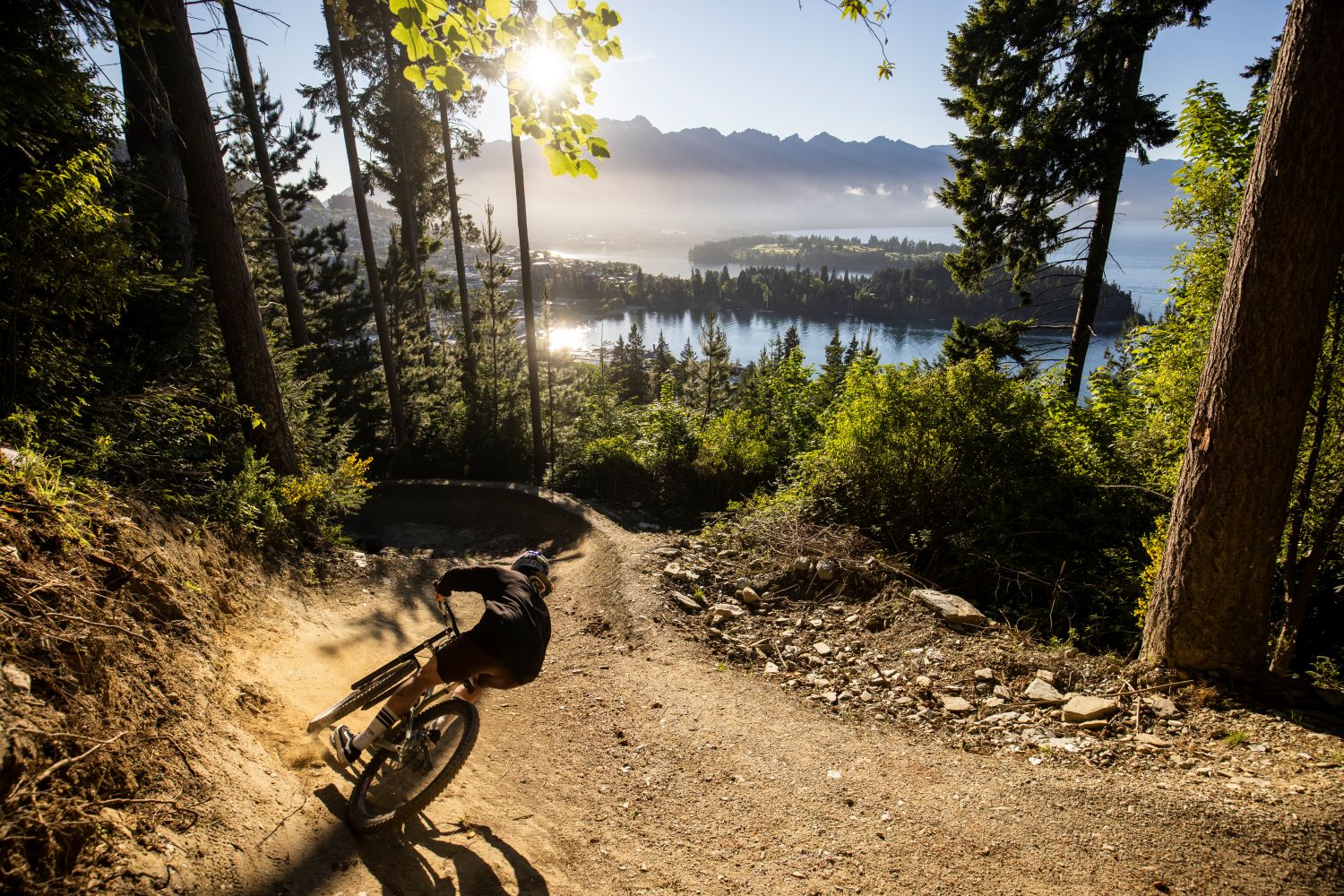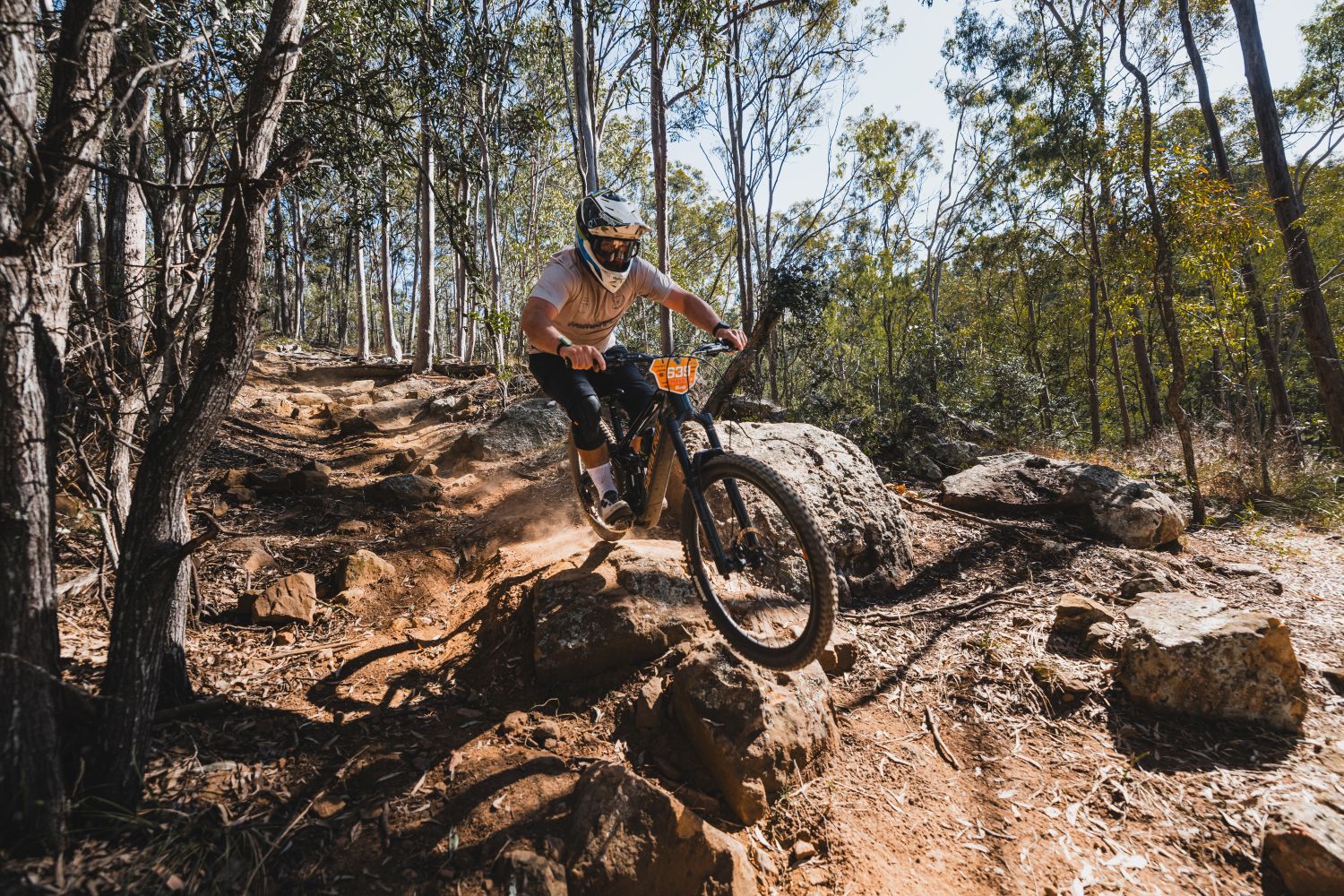Shimano XTR Di2 long-term test
Earlier this year, we received a 1x11 Shimano XTR M9050 Di2 group set and matching PRO Di2 compatible parts for a project build on a Norco Revolver 29 FS.
In 2014 Shimano released the much-anticipated XTR Di2 group set. Its arrival was no huge surprise, given the electronic shifting systems on their top tier road group sets were such a success, and the mechanical version of XTR had already just been launched. Regardless. It made tinkerers hacked road group sets obsolete, and reset the bar for shifting precision and accuracy.
The top of the food chain
With the release of XT M8050 Di2, Shimano have brought much of the same precision electronic shifting with a few newer programming options to the market. We're yet to touch an XT Di2 group set, but we expect it will have much of a similar feel for the electronic components, therefore bringing a whole lot of the precision, reliability and nuances of XTR Di2. The new indicator with Bluetooth connectivity for E-tube programming will be a bonus – and it will work with any current XTR Di2 as well.
So that leaves XTR Di2 still at the top of the food chain, with the inclusion of XTR cranks, brakes, chain and cassette it will still be far lighter than XT Di2. XTR has always been, and will always be, the no-compromise performance group set for Shimano. It will always cost a lot of money, and that extra investment may only get you diminishing returns compared to say, jumping from SLX to XT. XTR Di2 exists for the riders who demand the most out of their bikes – and if you want faultless shifting with low effort, each and every shift, it is quite simply the only group set you should consider. Shimano's engineers pursue perfection with their XTR group, and if that matches what you want to get out of yourself and your bike – then it's the group set you will want.
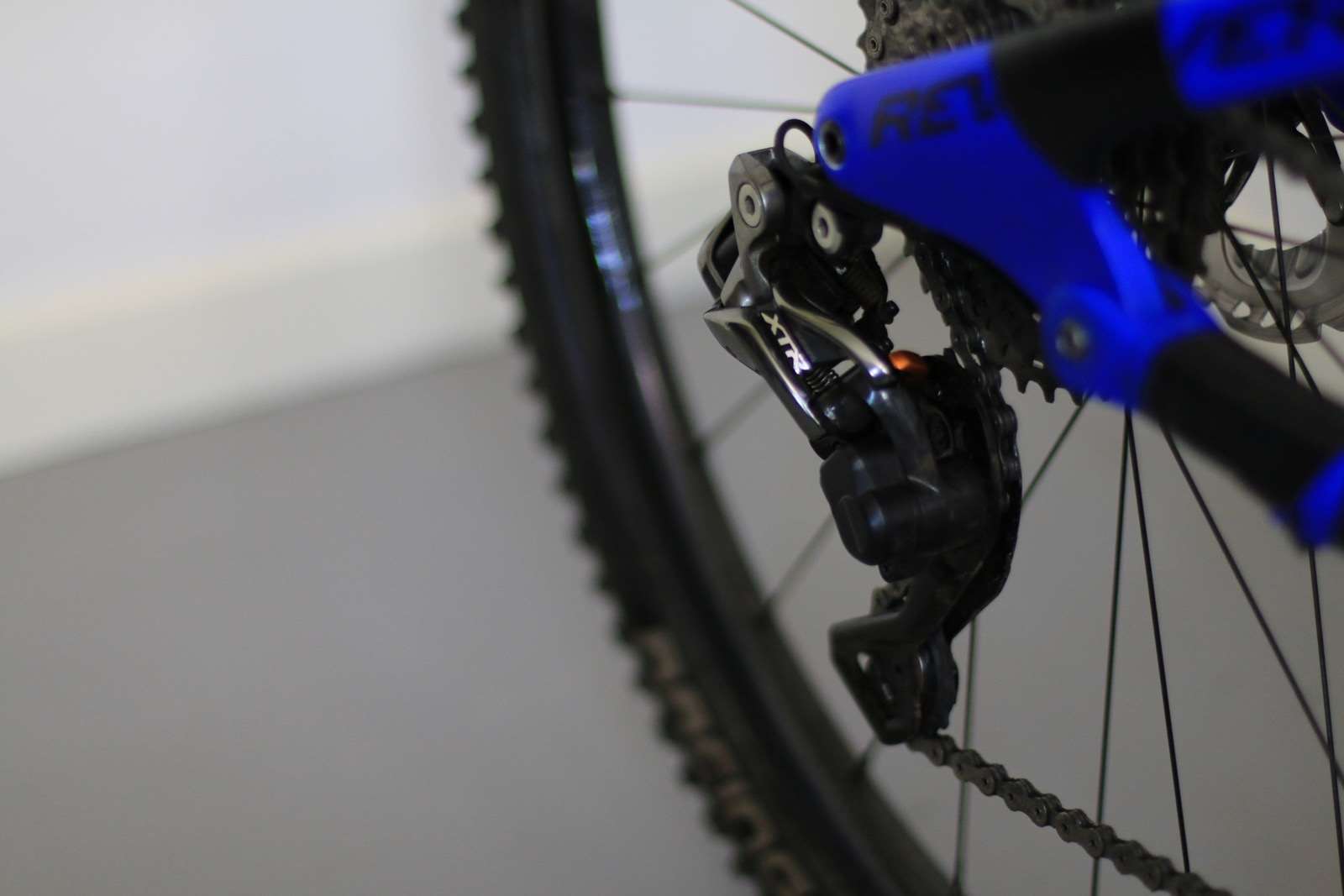
The low down on high-end performance
After our initial build in late February, I have had plenty of hours on my Norco with the XTR Di2 group. It is worth looking at more than just the electronic bits for this review, as we used the PRO Tharsis XC Flat Top Di2 handlebar and Tharsis XC stem, plus the steerer tube battery mount. Di2 = wires, and they need to be secured. The Tharsis bars allow the cable from the shifter to run internally to where the stem mounts, where it then passes inside the stem to the battery under the top cap. The initial setup did involve some more thinking and fiddling than usual, but the finished product is really neat. You don't actually need to get to the battery to charge it, so I could have secured it inside a frame tube with some padding – but the mount inside the steerer is secure and neat. Unfortunately the swing arm isn't strictly Di2 compatible so electrical tape does a sound job there.
These components are part of a successful performance build in my mind, and it's clear they have been designed as such. While wireless electronic shifting might not be that far away, for now the sealed system from Shimano is excellent, having weathered countless bike washes, water crossings, and muddy rides. The PRO components keep the wires out of harms way securely, not just relying on tape. The sweep on the Tharsis bars did take some getting used to, and at 720mm they're wide, but some may like wider.
With the battery is inside the steerer tube, the insert acts as an expanding plug, essentially with a top cap that sits under the main plastic top cap, and you use this to create the tension needed for the headset, along with a threaded base of the stem for fine tuning. I've taken it out a couple of times when stripping the bike, but otherwise it's required no attention. One downside is you need to cut your steerer to a lower height than the top of the stem for cable clearance – this means you need to be pretty certain about your position, as you cannot run spacers on top. You could always use a PRO carbon post with a Di2 battery mount inside it, and opt to not run the cables through the stem. As we built this bike with the KS dropper post, I preferred this mount to tethering it to the stealth cable.
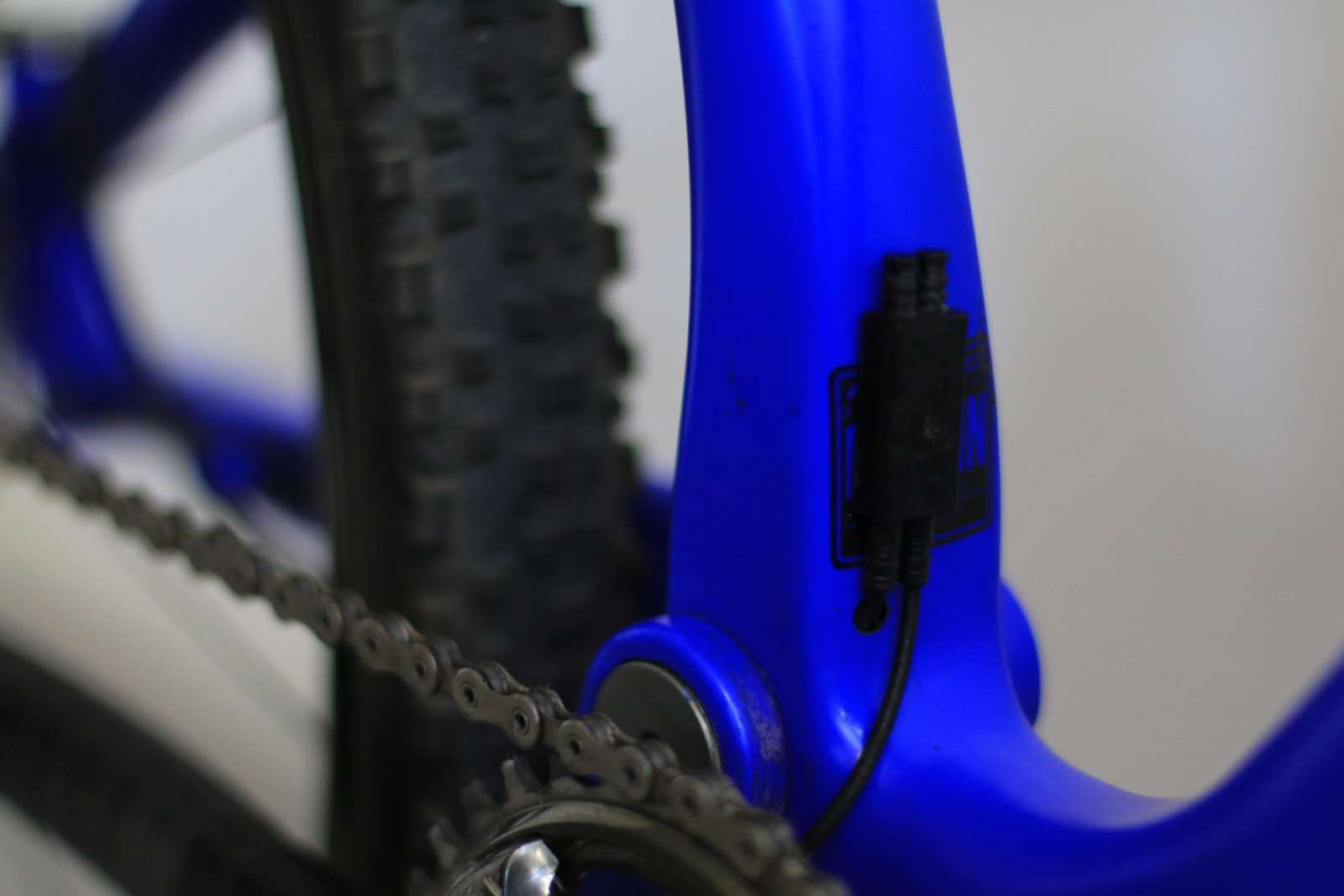
The Di2 feelz
Some things need to be ridden to be experienced, and Di2 is one such item. Far from a push button activation or a light switch, The Di2 shifters have a very natural feel – but with the lowest activation effort, even compared to XTR M9000 with SP41 full length outer and a new XTR cable. That shift is as smooth as butter and this is smoother, and faster. Thanks to the rotating action of the two shift paddles, the Di2 shifting not only means you have a similar feel to a mechanical lever, but it's actually a more comfortable shift to actuate. The shift action essentially rotates around the bar, which means the paddle isn't getting further away as you push it. Shimano have also ensured the shift has a tactile, and audible action. In the world of mountain bike riding and racing – this is essential. The shift is smooth, and you're not mechanically attached to the drivetrain so you can't 'feel' the shift through the cable when the pressure is on. So while the action is light, and it will always be light no matter if you're under load or cruising on the flat, the tactile feedback means you know you're shifting.
The shift is also a shorter throw than a mechanical lever. And while the long throw of a mechanical lever will gain more than one gear, holding the lever down on Di2 will also keep it changing, without an adverse change to your grip on your bar – and your control of your bike.
The shift paddles can be tuned for whatever shift you want them to do, and with a 2×11 setup you can opt for the SynchroShift pattern where one shifter controls the gear range, with the front chain ring shift programmed in for a certain point. You can also adjust the exact placement of the paddles depending on how far inboard our outboard you like to have them. I actually found this was one of the most crucial adjustments, to make sure the shifters fell exactly where my thumb and forefinger have grown accustomed to finding them.
How Di2 shapes your riding
I tested the XTR M9050 group in a 1×11 setup. The tightly spaced 11-40 cassette is super smooth with mechanical shifting, and was utterly seamless with electronic actuation. The XT 11-42 cassettes feel just about as smooth and are possibly the better option, as 11-40 is a pretty narrow range for a 1×11 bike, unless you really are changing chain rings to fine tune your gear range for any given ride, or race course. In that setup, XTR Di2 does become a little race-specific. I did also test the group with a SRAM 10-42 cassette and an E13 9-44 cassette. The shifting was just as good, save for some tooth alignment issues on the E13 cassette. I really enjoyed the riding more with a wider gear range, and I do believe this is telling.
XTR Di2 is optimised for 2×11 shifting with the SynchroShift setup, whereby one shifter is programmed to control two derailleurs using two closely spaced chain rings and the 11-40 cassette. Chain security, gear range and shifting efficiency would also be optimised with that setup. You can run the chain nice and tight as the computer won’t even let you get into a ratio that would mean it was too short. Unfortunately my bike is single ring specific – so I haven't had the opportunity to test it.
As it was though, the Di2 shift is smooth, and fast enough, to easily actuate shifts in situations where you might otherwise struggle. Holding the shift paddle down will keep the mech shifting, and this was great when forcing over the top of a technical climb when you need to gain gears as you bomb the other side. In reverse, it was also an excellent way to dump some gears when coming into a sharp unexpected corner.
Shimano’s concept with their 2×11 and 1×11 setups and gear ratios that are closer than the competition is maintaining rhythm and giving you range. Having ridden 1×11 XTR M9000 for over a year with both 11-40 and 11-42 cassettes, I came to appreciate the closer ranges, but did miss the overall spread. It helps keep the shifting smooth, and fast, making it easier to find the right gear – especially in racing situations where I tend to get a bit princess and the pea about… everything. Di2 makes those small changes effortless as you try to monitor cadence, heart rate, leg speed and the gap that’s opening up in front of you.
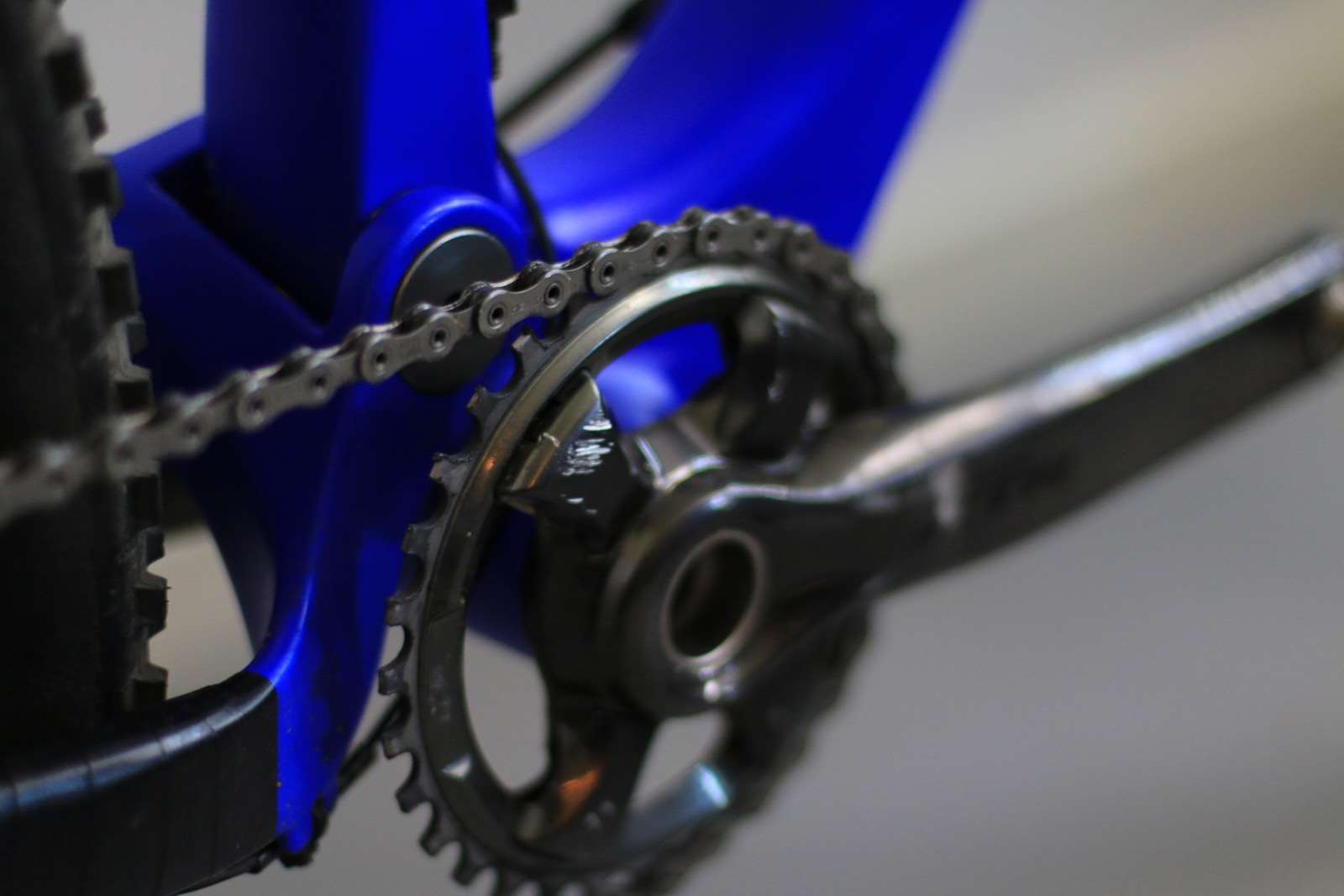
Chain security on the 1×11 setup has been good, but not brilliant. If you increase the clutch tension on M9000 you can feel it at the lever. Increase the clutch tension on M9050 Di2 and the change in shift action is minimal, but the increase in chain security is better. Shimano have new chain rings coming that use a narrow-wide profile, and I expect this will assist with chain retention. I experienced a few dropped chains, but no dropped chains would be far better. Notably I had one dropped chain on a 1×11 M9000 group last year, however that was paired with a non-Shimano narrow-wide chain ring.
Accounting for Di2 advantages
Di2 is a premium product, and left me lacking for nothing in terms of quality, and how reliably it works. My maintenance is no different from a mechanical drivetrain to electronic, except I pay no regard to cable stretch and outer wear.
The fact is though, with a 1×11 arrangement the range isn’t there – yet. SRAM’s 10-42 trumps Shimano, and although Shimano’s XT level 11-46 cassette is out, it’s a significant weight penalty at close to 500g. I really think XTR Di2 is aimed squarely at the bike racer – be it XC, marathon and even enduro like National Champ Chris Panozzo. But the cost of spares could put people off. Shimano’s XT Di2 group should be a better proposition for many mountain bikers. Taking costs into account though, I haven’t busted a Shimano rear mech since 2009, and that is through over 250 racing days by a quick mental tally. The Shadow Plus design is very much out of the way. Still, an amateur racer may be better served with M9000 and some cash in the bank for fresh chains and tyres to keep them rolling through the season. That’s a value call for each individual to make. A Di2 equipped bike is surely going to require less small adjustments through the season, and less shift effort with greater precision for every single shift you make.
I do think if you want the best range for a 1×11 setup you might be best going with a SRAM group set. But if you want the easiest, most precise shift, every time – Di2 is the answer. If you need the range their 2×11 option will offer greater range, with all the Di2 advantages. When more people get onto 1×12 later this year these opinions might change again, but those judgements will need to be made after a chance to ride the 1×12 setups to see how they manage ground clearance and keeping so much chain in place.
As it is, Shimano’s Di2 options allow fast, precise and reliable shifting, and the performance of the shifting cannot be faulted. Depending on your suspension preferences, a Di2 system will also allow use of Fox’s IRD electronic lockout. This may just be the start of further electronic integrations on mountain bikes.
Hits:
-
Unbeatable for shift precision and low effort
-
Faultless engineering with the Di2 electronics
-
Excellent ergonomics
Misses:
-
Limited range in 1×11
-
Considerable investment
-
Best suited to fully Di2 compatible bikes and parts
RRP: See your Shimano dealer for upgrade costs for your ride.
From: shimano.com.au



